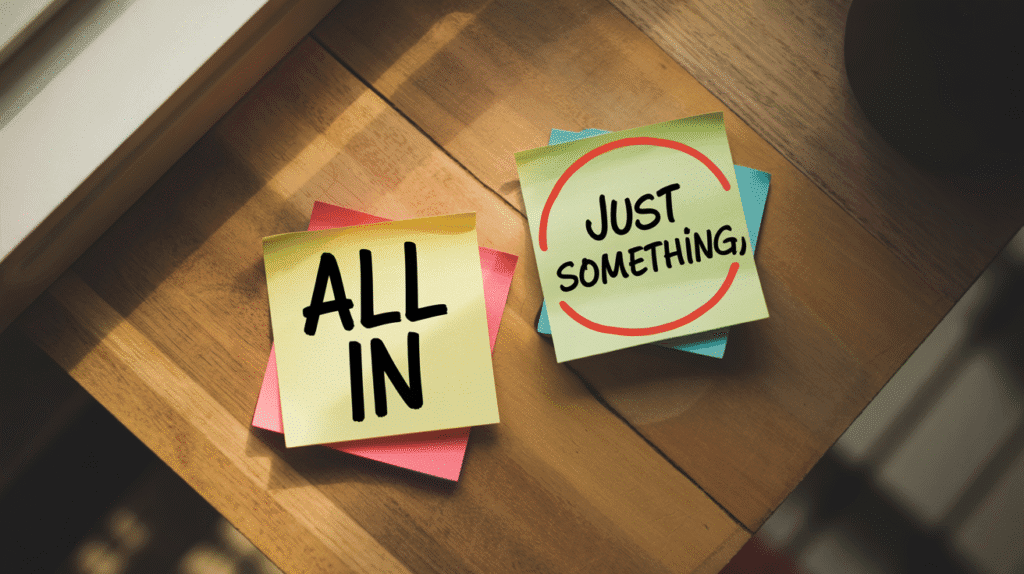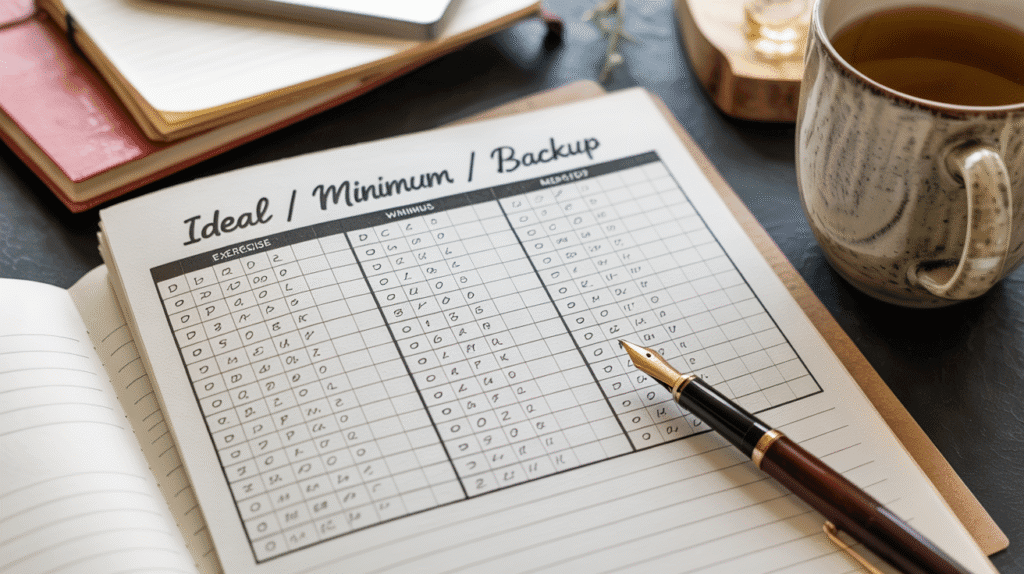
I used to live in extremes. Either I was doing everything right—working out, eating clean, journaling, meditating—or I was doing absolutely nothing. One bad day, and I’d drop the whole routine. I told myself I had to “start over,” again and again.
Sound familiar?
That’s the trap of the all-or-nothing mindset. It convinces you that anything less than perfect doesn’t count. That if you can’t do it fully, you might as well not do it at all. It feels logical—but it silently destroys progress, self-trust, and momentum.
What finally changed things for me wasn’t a better planner or more willpower. It was a simple formula—one that gave me room to be human, messy, and still consistent. One that helped me build real habits without starting over every time life got hard.
This article is about that formula—and how it helped me break free from the loop of perfection and procrastination once and for all.
At first glance, “all or nothing” thinking looks like discipline. You tell yourself, If I’m going to do this, I’m doing it 100%. But what starts as commitment quickly becomes a trap.
This mindset thrives on perfectionism. You set rigid standards, chase streaks, and equate success with flawlessness. But the moment you miss a day, hit a roadblock, or just feel off—you fall into nothing. Might as well skip the rest of the week. I already blew it.
This approach:
The “all or nothing” mindset makes it impossible to win on hard days. It erases your progress the moment things get messy. And let’s be honest—life is always a little messy.
Consistency doesn’t come from going all-in every time. It comes from showing up in some way, no matter how small.
What you need isn’t intensity. What you need is flexibility—backed by a system that supports your real life, not your ideal one.

After years of starting over, I realized I didn’t need a new routine—I needed a new rule. One that didn’t collapse when life got hard. One that let me keep moving, even if just an inch at a time.
So I created my own habit formula:
Ideal Version → Minimum Version → Backup Option
(aka: Always Something)
This formula gives your habit three forms:
Let’s break it down with real examples:
| Habit | Ideal | Minimum | Backup |
|---|---|---|---|
| Exercise | 30-minute workout | 5 squats | Put on gym shoes & stretch |
| Journaling | Full page of writing | 1 sentence | Open notebook, write date |
| Reading | 20 pages | 1 paragraph | Hold the book, read 1 line |
| Meditation | 10 minutes, guided | 1-minute breathing | Sit still, breathe 3 deep times |
The brilliance of this system is that it always has a way to say yes—even if your energy says no. And each version reinforces the same identity: I’m someone who shows up.
You’re not lowering your standards. You’re designing for reality, not fantasy. And reality is where real habits live.
Most habits fail not because they’re unimportant, but because they’re too rigid. The “Always Something” formula works because it removes the pass/fail dynamic. Instead of perfection or nothing, you now have a spectrum of success.
Here’s why this approach is so powerful:
The moment you say, “I only have to do the minimum,” your brain relaxes. There’s no pressure, no negotiation. You simply show up.
Even when you do the smallest version, your brain still logs: I did it. I’m consistent. That repetition wires the identity of someone who follows through.
You stay connected to your habit every day, even in survival mode. That means no more guilt spirals or “starting over” from scratch.
This method acknowledges that not every day will look the same—and that’s okay. Flexibility isn’t weakness. It’s wisdom.
What you’re really building is not just a behavior—it’s resilience. The ability to keep showing up, gently and consistently, even when conditions aren’t perfect.
That’s why this formula doesn’t just work. It keeps working.

You don’t need to start from scratch—you just need to give your habits range. The “Always Something” formula gives you a flexible structure to support real life, not ideal conditions.
Here’s how to build your own:
Pick something meaningful, but realistic for your current season. It could be movement, mindfulness, learning, or creative work.
Use this table to map out your versions:
| Habit | Ideal Version | Minimum Version | Backup Option |
|---|---|---|---|
| (On a good day) | (Takes 1–2 minutes) | (Takes under 30 seconds) | |
Examples:
Post this table somewhere you’ll see it: notebook, whiteboard, digital dashboard. On tough days, it becomes your anchor, not your excuse.
Train your brain to see any version as a win. The goal isn’t to “level up” every time—it’s to keep the chain alive.
With this plan, you remove the pressure to be perfect—and replace it with permission to be consistent.
Because something is always better than nothing. And something done often becomes something powerful.
The “all or nothing” mindset sounds like commitment—but it often ends in collapse. It teaches us that if we can’t go all-in, we’re already out. But that’s not how real progress is made.
Real consistency comes from flexibility. From creating space for effort and imperfection. From learning to show up in pieces, not just in power.
The “Always Something” formula helped me escape the loop of burnout, shame, and false starts. It gave me a way to honor my goals without betraying my limits. And that’s what made it stick.
So here’s your invitation: redefine success. Build habits that scale with your day, not against it. Start with your ideal, your minimum, and your backup. And then trust the process—not because you’re perfect, but because you’re present.
You don’t have to do everything. You just have to do something. That’s enough. That’s momentum. That’s freedom.